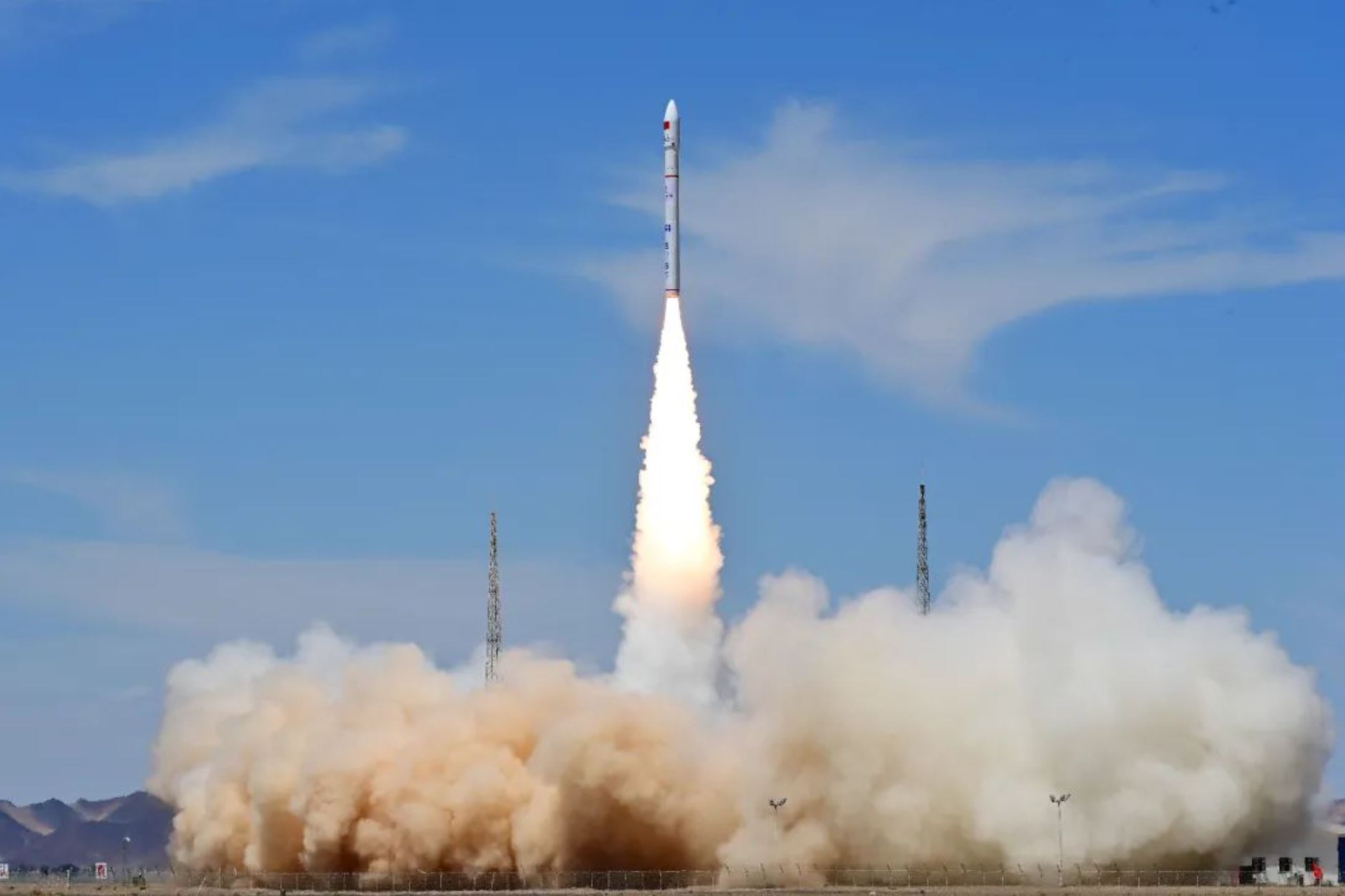HELSINKI — Chinese startup Galactic Energy sent two satellites into orbit early Saturday with the company’s sixth consecutive successful launch.
A Ceres-1 four-stage solid rocket lifted off using a transporter erector launcher at the Jiuquan Satellite Launch Center in the Gobi Desert at 1:07 a.m. Eastern, July 22. Two satellites were aboard the flight codenamed “Lemon Tree.”
Qiankun-1 is a very low Earth orbit (VLEO) satellite developed by Chinese firm C-Space. It carries test payloads for hyperspectral imagery, visible light cameras and intelligent image processors, according to a Galactic Energy statement. The spacecraft is China’s first VLEO satellite.
The other passenger was the Xingshidai-16 hyperspectral remote sensing satellite for ADA Space. The commercial firm is a satellite operator which aims to use AI applications to optimize its remote sensing data.
The mission is a notable moment for Galactic Energy. The company says it will now begin a period of high frequency launches, starting with a next launch Aug. 5. Liu Baiqi told Chinese media that the firm will pursue higher efficiency and reliability during the upcoming launch activity. It also expects to announce a new funding round in the near future.
The firm aims to carry out 6-8 further Ceres-1 launches before the end of 2023. The July 22 launch used the third of a batch of 10 mass-produced Ceres-1 rockets.
A first Ceres-1 launch from a sea platform could take place late in the year. China has in recent years established infrastructure near Haiyang in the eastern coastal province of Shandong to facilitate launches from the Yellow Sea.
Both commercial and state-owned companies are launching solid rockets from the Yellow Sea, and are looking at liquid propellant rocket sea launches.
Ceres-1 has a diameter of 1.4 meters, a length of about 20 meters, a mass at take-off of about 33 tons and a liquid propellant upper stage. It can deliver 400 kg to LEO or 300 kg to a 500-kilometer-altitude sun-synchronous orbit (SSO).
The company is also working on its two-stage Pallas-1 reusable kerosene-liquid oxygen launcher. Pallas-1 will be capable of carrying 5,000 kilograms to low Earth orbit or 3,000 kilograms to 700-km SSO.
The company stated at the China Commercial Aerospace Forum in Wuhan earlier this month that it is targeting Q3 next year for the Pallas-1 test flight. A first flight including recovery of the first stage using landing legs is slated for 2025.
A triple-core variant of the Pallas-1 is planned for as soon as 2026. That launcher will be capable of lifting 14,000 kg to LEO.
Galactic Energy’s launch activity is part of a forecast surge in Chinese commercial launch in 2023. Further commercial firms iSpace, Expace, Space Pioneer and Landspace have reached orbit so far this year, with Orienspace aiming to conduct its first launch with the Gravity-1 solid rocket in the second half of 2023.
Space Pioneers’ Tianlong-2 was the first liquid propellant launcher from Chinese firms to reach orbit, while Landspace became the first globally to achieve orbit with a methane-fueled launcher.
